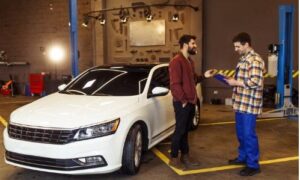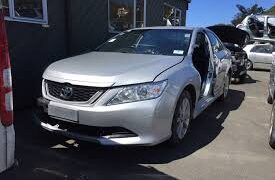In today’s world, we all need to be mindful of our impact on the environment. Driving is one area where we can make a difference by adopting greener habits and practices. By doing so, we can help reduce emissions and conserve resources.
Here are some tips on how to make your driving habits and car greener:
-
Drive Smarter
One of the simplest ways to make your driving habits greener is by driving smarter. This means accelerating and decelerating smoothly, maintaining a steady speed, and avoiding rapid acceleration or braking. By doing so, you can improve your fuel efficiency and reduce emissions.
When a vehicle accelerates or decelerates, it changes its speed, and this change in speed requires energy, which is supplied by the fuel in the tank.
By minimizing acceleration and deceleration, a driver can maintain a more consistent speed, which reduces the need to use extra energy to speed up or slow down. This can lead to a more efficient use of fuel and ultimately save gas.
Additionally, sudden acceleration and deceleration can lead to more friction and wear on the tires and brakes, which can reduce their lifespan and require more frequent maintenance. This, in turn, can lead to additional costs for the vehicle owner.
-
Carpool or use public transportation
One of the most effective ways to reduce emissions from driving is to carpool or use public transportation. By sharing a ride or taking public transportation, you can significantly reduce the number of cars on the road and save on fuel costs.
When people carpool or use public transportation, they are reducing the number of cars on the road, which in turn reduces the amount of greenhouse gasses emitted into the atmosphere. Greenhouse gasses are a major contributor to climate change, so any reduction in their emissions is beneficial for the planet.
Additionally, cars emit pollutants that can harm the air quality and lead to health problems. By reducing the number of cars on the road, carpooling and public transportation can help decrease air pollution levels and improve the overall health of people and the environment.
-
Regular Maintenance
Regular maintenance is important for ensuring your car is running at its most efficient. This includes keeping your tires properly inflated, changing your oil regularly, and replacing air filters as needed.
Regular car maintenance, such as changing the oil, replacing air filters, and ensuring that tires are properly inflated, can help improve a vehicle’s fuel efficiency. This means that the car will burn less fuel and produce fewer emissions, which is better for the environment.
Maintenance can also include making necessary repairs before a problem can get worse. For example, replacing a faulty oxygen sensor can improve the efficiency of the car’s emissions control system, reducing the amount of pollutants that are released into the atmosphere.
Additionally, proper maintenance can help extend the lifespan of a vehicle, which means that fewer new cars need to be manufactured and fewer old cars need to be scrapped. This can help reduce the environmental impact of car production and disposal.
-
Reduce Idling Time
Idling is a major contributor to emissions from cars. By reducing your idling time, you can help reduce emissions and save on fuel costs. If you are going to be stopped for more than 30 seconds, consider turning off your engine.
Other good ways to reduce idling time include planning your trips, using a remote starter when possible, avoiding drive-thrus and minimizing the use of car accessories.
Planning your trips can minimize the amount of time you spend sitting in traffic or waiting in line. You can avoid routes with heavy traffic or construction, and try to time your trips to avoid rush hour.
If you live in a cold climate, consider using a remote starter to warm up your car before you get in. If you’re getting fast food or coffee, park your car and go inside instead of using the drive-thru.
And finally, when you’re not driving, turn off accessories like the air conditioning, radio, and headlights to reduce the load on the engine and save fuel.
-
Use Eco-Friendly Products
When it comes to cleaning your car, use eco-friendly products. Many traditional car cleaning products contain harmful chemicals that can be harmful to the environment. Look for products that are labeled as eco-friendly and use natural ingredients.
For example, you can look for eco-friendly car wash soaps that don’t contain the harsh chemicals found in typical car cleaning products. Soaps that rely on biodegradable chemicals and those that are friendly to the environment won’t cause as many problems if they get into the sewer system.
You can also prioritize using reusable microfiber towels to clean your car instead of single use wipes, eco-friendly synthetic or recycled motor oil, fuel-efficient tires (look for tires with a high fuel efficiency rating), LED lights for your headlights and recycled seat covers. The three Rs — reduce, reuse, recycle — apply to your vehicle products too!
-
Consider an Electric or Hybrid Vehicle
If you are in the market for a new car, consider an electric or hybrid vehicle. These vehicles produce fewer emissions and can save you money on fuel costs in the long run. While the upfront cost may be higher, the long-term savings can make it worth it.
Electric and hybrid cars can have little to no tailpipe emissions, which means each ride you take causes significantly less harm to the environment. Electric and hybrid cars can also run on renewable electric energy, rather than “single-use” gasoline. Furthermore, with the adoption of electric vehicles, consider investing in EV charger installation at your home. Installing an EV charger allows you to conveniently charge your electric vehicle overnight, using clean energy sources, further reducing your carbon footprint and promoting sustainability.
There’s other benefits too — like the reduced noise pollution caused by electric vehicles, plus their reduced maintenance costs due to having a simpler engine. Combustion engines, with their multiple moving parts, can require more maintenance and replacement parts over time, contributing to waste.
-
Drive Less
Finally, the best way to reduce emissions from driving is to drive less. Consider walking or biking for short trips or using a scooter or electric bike. Not only is walking or biking better for the planet, but it’s better for your health as well.
By looking for ways you can cut vehicle trips out of your day to day schedule, you can get to know your area from a more on-the-ground perspective, noticing the parts of your city that you might typically speed past on the highways.
You can find local businesses you weren’t aware of, and familiarize yourself with local improvements that have been made and could be made to make cars less critical to your day-to-day life.
In conclusion, there are many ways to make your driving habits and car greener. By adopting these practices, we can all do our part to help reduce emissions and conserve resources. Remember, even small changes can make a big difference in the long run.


































